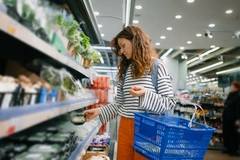EU plans crackdown on excessive packaging through e-commerce restrictions

07 Nov 2022 --- The European Commission (EC) is preparing to unveil new legislation limiting packaging size and the amount of “empty space” in e-commerce boxes. According to a leaked document, the EC is trying to reduce packaging waste through the e-commerce industry, which has faced backlash regarding its over-packaging by environmentalists.
“The key issue with e-commerce is that platforms often use boxes too big for the article they are shipping. This increases packaging waste and delivery emissions because unnecessary space is wasted in postage services,” Jean-Pierre Schweitzer, deputy manager of circular economy at the European Environmental Bureau, tells PackagingInsights.
The legislation will be revealed on November 30 as a revision of the EU Packaging and Packaging Waste Directive in Article 22; adjustments are still currently being made, causing it to be subject to change.
So far, the key points being raised are to improve packaging design to promote reuse and recycling, increase recycled content in packaging, tackle excessive packaging and reduce packaging waste.
These measures are set to combat the mounting issue of excessive e-commerce packaging. Despite an overall trend toward light-weighting, the amount of packaging waste generated over the last decades has increased, the EC says in its preliminary cost-benefit analysis of the EU’s packaging waste legislation.
.jpg) The European Commission to implement stricter legislation surrounding e-commerce packaging later this month. New EC strategy
The European Commission to implement stricter legislation surrounding e-commerce packaging later this month. New EC strategy
Since March 2020, corrugated box shipments have jumped 9%, according to the Fiber Box Association.
“Europe currently has the highest packaging waste in history, over 177 kg per capita. The level of packaging waste has grown faster than the economy, by 20% in 10 years. The biggest share comes from paper and cardboard – 32.7 million metric tons in 2020, 41.2% of the total – this is the main material used in the e-commerce sector,” Nathan Dufour, Zero Waste Europe (ZWE) consumption and production policy officer, tells us.
“The growth trend has been accentuated by new consumption habits such as on-the-go consumption, increased online sales and home deliveries,” an EU executive says in the leaked draft of the new packaging law.
A vital aspect of the EU’s draft new regulation is ensuring “packaging minimization” and reducing unused space, which is often filled by polystyrene, air cushions, paper cuttings and bubble wraps. “The empty space ratio is a maximum of 40%,” according to the draft.
“Packaging with double walls, false bottoms and other means to create the impression of increased product volume, or superfluous packaging not fulfilling a packaging function … shall not be placed on the market,” the EC states in the new legislation.
Environmentalist opinions
According to the World Wildlife Fund, packaging waste alone contributes to one-third of generated household waste – it is estimated that 2-3% of this packaging waste comes from e-commerce – which could double by 2025. Due to overall plastic recycling rates at 4%, most of this e-commerce packaging will end up in landfills.
“Many product packaging is already suitable for shipment, such as those that already come in boxes, and not fragile, so often, additional shipment packaging is not needed. Therefore, online retailers should offer an option for consumers that want to reduce their waste with a packaging-free delivery or a reusable option,” says Dufour.  The pandemic created an upsurge in the e-commerce industry, leading to increased cardboard waste.
The pandemic created an upsurge in the e-commerce industry, leading to increased cardboard waste.
ZWE has stated in a report that e-commerce can contribute the most to promoting reuse, “these are market sectors that are already en route to deliver on reuse and offer the biggest potential to increase their reuse rates in the coming years.”
The initiative found that single-use packaging for e-commerce care products should be reduced by 50% (by units) by 2030 to make a sizeable impact on e-commerce waste.
An ambitious new EU legislation on packaging and packaging waste would help unlock these innovators’ scaling potential and guide the next investment cycles in the right direction. If the EU succeeds in setting the tone properly, we predict this will unlock these virtuous business models, which will flourish further across Europe,” says Dufour.
Revved by COVID-19
Dufour continues, “in the EU alone, roughly 60 billion units of single-use packaging for postal services were used in 2019. The biggest chunk (2.5 kilotons) comes from cardboard shipping boxes alone. This has increased the years after with the start of the pandemic and e-commerce further picking up.”
E-commerce in Europe grew by 13% to €718 billion (US$716 billion) in 2021, according to an EC report. This report is partially attributed to the rise due to the COVID-19 pandemic.
“This acceleration was significantly pushed by the pandemic, during which e-commerce and retail played an essential role,” says Luca Cassetti, secretary general of e-commerce Europe.  Zero Waste Europe investigates the effects of e-commerce excessive packaging effects on the environment and economy.
Zero Waste Europe investigates the effects of e-commerce excessive packaging effects on the environment and economy.
The pandemic caused consumers to start receiving the packaging at home, meaning they were obligated to recycle the boxes themselves. Typically, waste packaging is handled by retail stores and supermarkets that compress the material in bales and stockpile it on-site before it is collected by trucks for recycling.
The e-commerce impact
According to a study by Oceana, Amazon generated 211 thousand metric tons of plastic packaging waste in 2019. The number of air pillows alone could circle the globe 500 times. It is estimated that up to 10 thousand metric tons of Amazon’s plastic packaging ended up in the world’s freshwater and marine ecosystems.
However, Amazon has replaced single-use plastic delivery bags with 100% recyclable paper delivery bags and cardboard envelopes for all orders from Amazon’s European distribution network,” Harry Straight, an Amazon spokesperson tells PackagingInsights.
Schweitzer counteracts that “Overall e-commerce and notably the platforms who sell the goods have a dominating role in putting products on the market and consequently creating waste, including packaging waste. So far, waste legislation hasn’t caught up with this modern reality. Key issues to address in the sector are removing empty space, moving to reuse and avoiding free-riding from producer responsibility.”
By Sabine Waldeck











